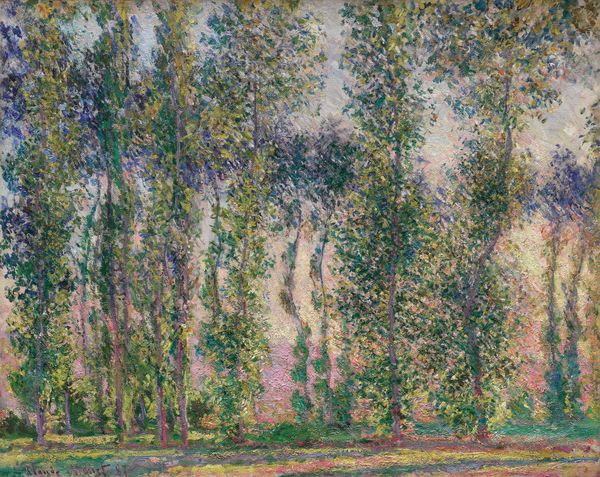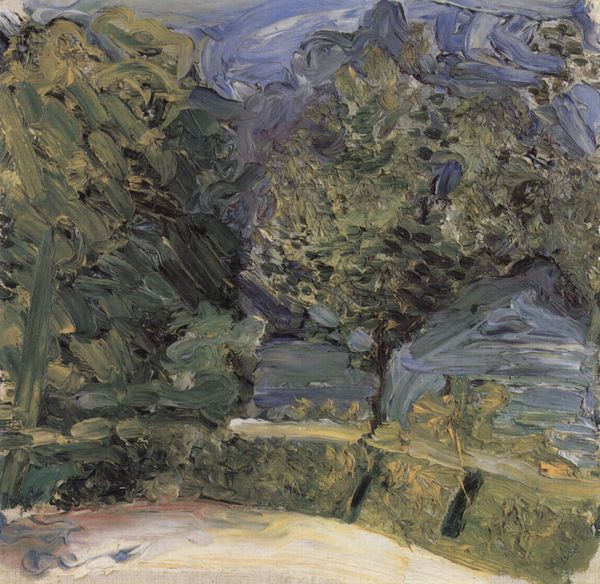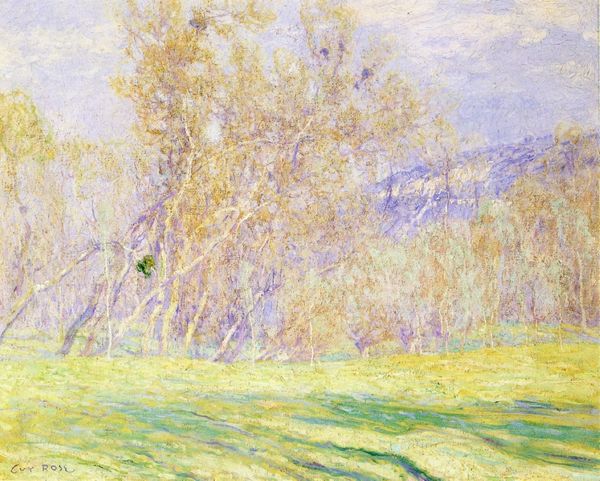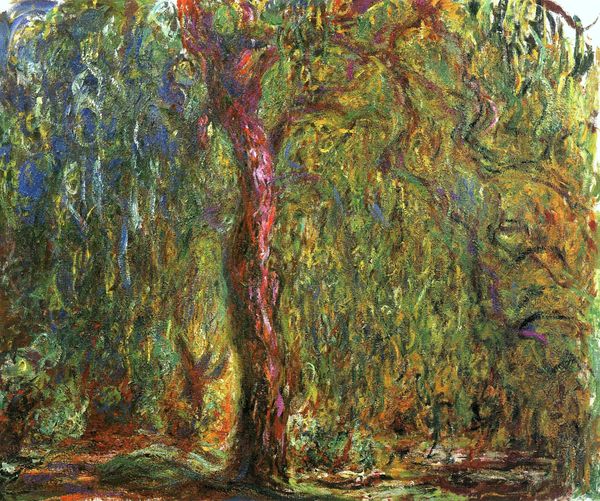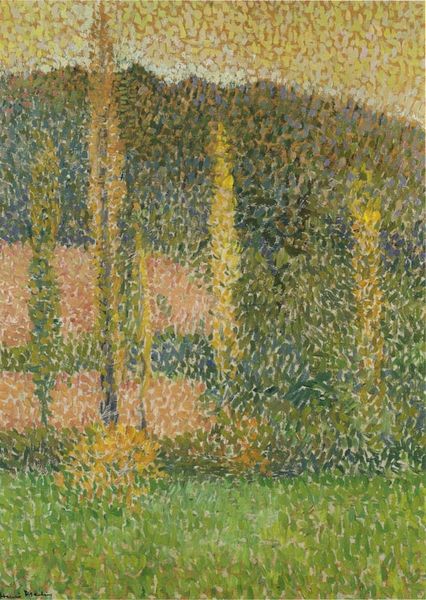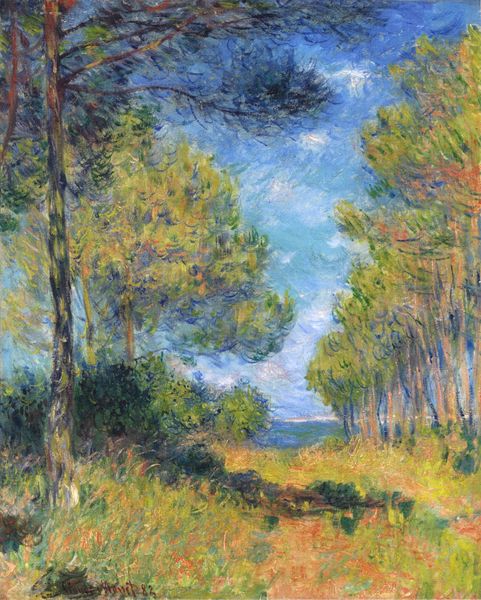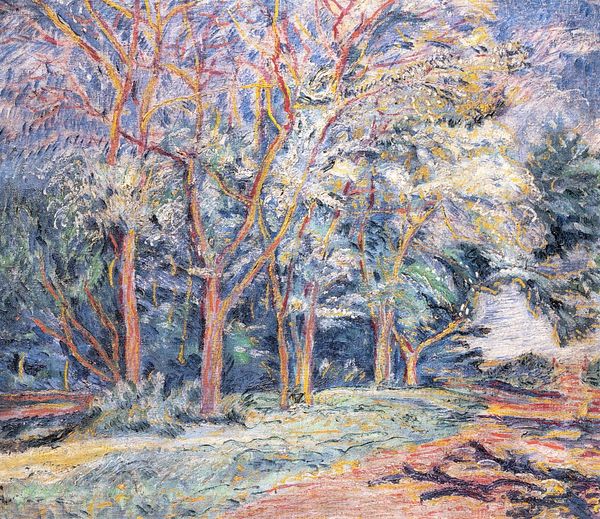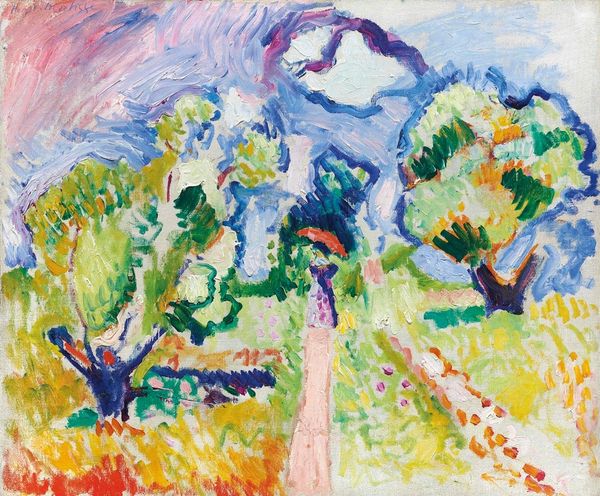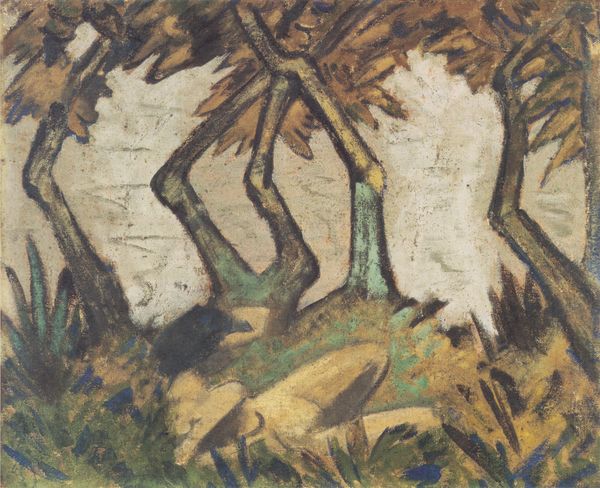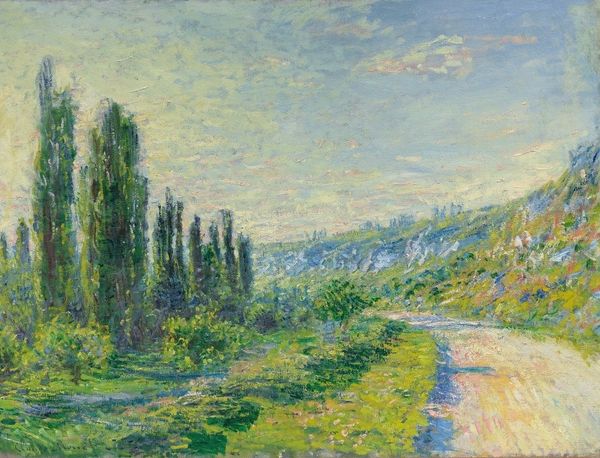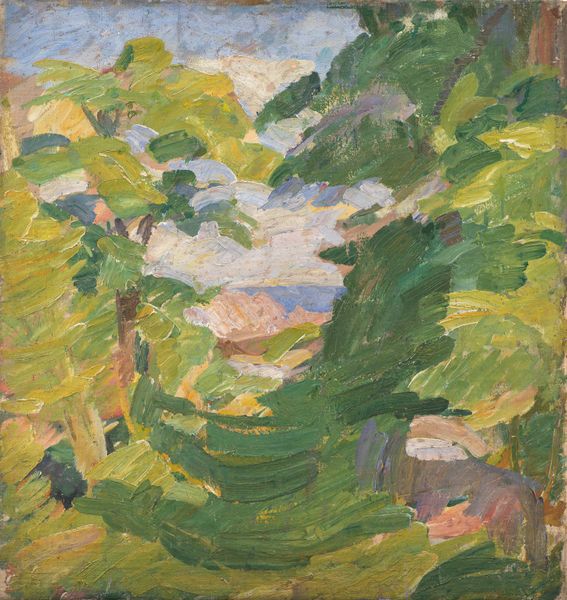
Copyright: Public domain
Curator: Ivan Grohar’s "Larch," painted in 1904. What strikes you most about this piece? Editor: Initially, it evokes this incredible sense of stillness, almost like a held breath just before something significant happens in the natural world. And then I notice that there's a storm of impasto brushstrokes. Curator: Precisely! Grohar, a key figure in Slovenian Impressionism, created this work en plein air. Notice the delicate dance between line and color, naturalism, romanticism all intertwined through paint applied in very visible strokes. Editor: Absolutely, you can almost feel the breeze in those strokes. The perspective, though, seems subtly political. We're looking at a seemingly untouched natural landscape, but the small dwelling in the distance quietly reminds us of human impact, particularly rural lives in the early 20th century. The landscape bears traces of both exploitation and belonging. Curator: Yes! And Grohar captures that duality beautifully. The Larch itself feels like a silent observer, a witness to the changing landscape, with his name even carved in its trunk! But, in an optimistic sense, I believe he tries to merge this observation of decay in landscapes by bringing them closer to humanity with his work. There is still so much beauty and warmth. Editor: It does read that way too. The warm palette does much of that lifting—all that pink! You can definitely see the romantic leanings, maybe even hinting at broader nationalist sentiments about Slovenian identity bound to the land during a time of Austro-Hungarian rule. Curator: And how that identity becomes visually codified! For me, there is also a bit of melancholy here – the painting is both deeply rooted in place but almost unearthly, as if one can never truly possess this perfect image. It remains idealized and unreachable, in the same sense as love itself can never be fully owned, and it may always remain an idea of perfection rather than something completely realized. Editor: I agree. And perhaps that's the painting's power, the space it creates for contemplation between the real and the idealized landscape. Grohar provokes consideration about the many layers of that interaction and history between ourselves, and the land that we find ourselves in. Curator: It invites a dialogue with nature but also with ourselves. It encourages seeing landscapes through layers, revealing beauty and questioning who truly has a voice, both as artists, humans and activists, to say they love something in an "unpossessive" sense.
Comments
No comments
Be the first to comment and join the conversation on the ultimate creative platform.
